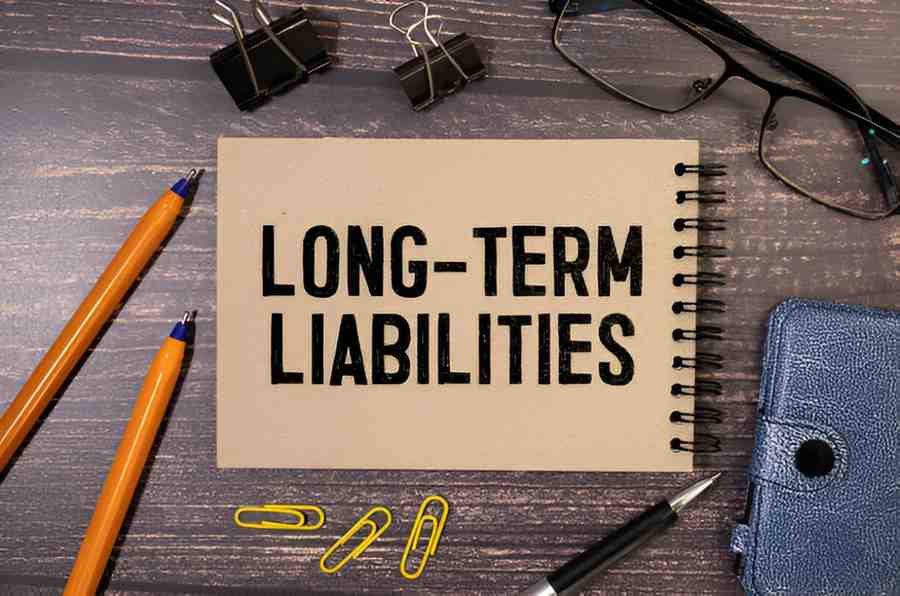Long-term liabilities shape the financial health of businesses and individuals alike. Whether you manage a corporation’s balance sheet or plan personal finances, understanding these obligations ensures stability. I will break down long-term liabilities, their types, valuation, and management strategies in this guide.
Table of Contents
What Are Long-Term Liabilities?
Long-term liabilities are financial obligations due beyond one year. They include bonds, mortgages, lease payments, and pension obligations. Unlike short-term debts, these commitments require strategic planning due to their extended timelines.
Key Characteristics
- Maturity Period: Payable after 12 months.
- Interest Obligations: Often carry fixed or variable interest.
- Impact on Solvency: Influence credit ratings and borrowing capacity.
Types of Long-Term Liabilities
1. Bonds Payable
Companies issue bonds to raise capital. Bondholders receive periodic interest (I = P \times r \times t), where:
- P = Principal
- r = Interest rate
- t = Time period
Example: A $1,000,000 bond at 5% annual interest for 10 years pays $50,000 yearly.
2. Long-Term Loans
Mortgages and business loans fall here. Payments include principal and interest.
Amortization Formula:
PMT = P \times \frac{r(1 + r)^n}{(1 + r)^n - 1}
Where:
- PMT = Monthly payment
- n = Number of payments
3. Lease Obligations
Under ASC 842, leases longer than 12 months must be recorded as liabilities.
4. Deferred Tax Liabilities
Taxes postponed due to timing differences between accounting and tax rules.
5. Pension Obligations
Defined benefit plans create long-term payouts. Actuarial assumptions determine present value.
Valuation of Long-Term Liabilities
The present value (PV) concept is crucial:
PV = \frac{FV}{(1 + r)^n}Example: A $100,000 payment due in 5 years at 6% discount rate has a PV of:
PV = \frac{100,000}{(1 + 0.06)^5} = 74,725.82Managing Long-Term Liabilities
1. Debt-to-Equity Ratio
A solvency metric:
\text{Debt-to-Equity} = \frac{\text{Total Liabilities}}{\text{Shareholders' Equity}}Interpretation:
- <1: Low leverage
- >2: High risk
2. Refinancing
Swapping high-interest debt for lower rates reduces costs.
3. Sinking Funds
Setting aside money periodically to repay bonds at maturity.
4. Covenant Compliance
Loan agreements may restrict additional borrowing or dividend payouts.
Risks of Mismanagement
- Default Risk: Missing payments harms credit.
- Interest Rate Risk: Variable rates may spike costs.
- Refinancing Risk: Inability to roll over debt.
Case Study: Corporate Bonds
XYZ Corp issues 10-year bonds:
- Face Value: $500,000
- Coupon Rate: 4%
- Market Rate: 5%
Bond Pricing:
Price = \sum \frac{C}{(1 + r)^t} + \frac{F}{(1 + r)^n}
Where:
- C = Annual coupon payment
- F = Face value
Calculating:
Price = \frac{20,000}{1.05} + \frac{20,000}{1.05^2} + \dots + \frac{520,000}{1.05^{10}} = 461,391The bond sells at a discount because the market rate exceeds the coupon rate.
Long-Term Liabilities in Personal Finance
Individuals face mortgages, student loans, and car payments.
Mortgage Example:
- Loan: $300,000
- Term: 30 years
- Rate: 3.5%
Monthly Payment:
PMT = 300,000 \times \frac{0.002917(1 + 0.002917)^{360}}{(1 + 0.002917)^{360} - 1} = 1,347Tax Implications
Interest on mortgages and student loans may be deductible, reducing taxable income.
Comparison: Short-Term vs. Long-Term Liabilities
| Aspect | Short-Term | Long-Term |
|---|---|---|
| Maturity | <1 year | >1 year |
| Interest Rates | Lower | Higher |
| Financial Impact | Liquidity risk | Solvency risk |
Conclusion
Long-term liabilities demand foresight. Whether you handle corporate bonds or a home loan, understanding terms, valuation, and risks ensures financial health. I recommend periodic reviews of debt structures and interest exposures to maintain stability.





